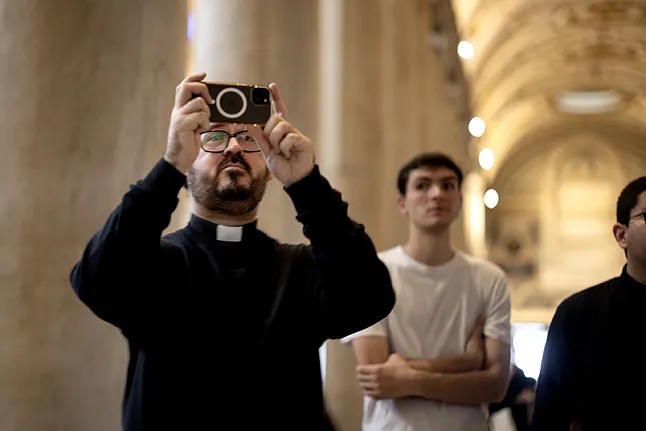They also wouldn't have to wait too long under the sun. At least the Esquiline - one of the seven Roman hills - does not yet record the congestion of visitors that is predicted for this exceptional spring where a jubilee merges with a conclave, and fortunately, the carabinieri have decided not to be overly inquisitive in access controls. It will be a paradox, but a smiling police officer gives more security than one who frisks us.
When finally crossing the threshold and the golden coffered ceiling unfolds above their heads, the pilgrim once again receives, as if for the first time, the ineffable impression that is unique to Rome: the great beauty. No matter how Neapolitan Sorrentino may be, in his masterpiece, he had to surrender to the evidence. It may not be St. Peter's, but without a doubt, Jorge Mario Bergoglio - the least Sorrentine of possible popes - has known how to choose his final resting place. It is located in a side nave, to the left upon entering (he wasn't going to change his ideology at this point, a mischievous one would add), just before encountering the baroque splendor of the Pauline Chapel that houses the icon of the Salus Populi Romani: perhaps the most venerated Marian image in the city, with the pious chisel of Michelangelo. There he will be buried, in the bare slab that will bear his name, as humble as the tomb under which the devout Bernini rests in the opposite wing. The genius before whom seven popes and all the absolutist courts of Europe bowed chose to be buried under a smooth step next to the presbytery. That is why it can be said that Bernini, three and a half centuries after his death, is also the author of the tomb of Franciscus.
In Rome, the three P's of journalists, pilgrims, and primates swarm, although one has certainly not yet come across a cardinal on the metro. Let's remember that the Church is an epistocracy. Is that why it endures? Certainly, no one has yet published an essay titled How Epistocracies Die. The fact is that not just anyone enters the Sistine Chapel these days. The frescoes of the Florentine artist solemnly await the cardinals who will choose the spiritual leader of a billion Catholics. In the high curial galleries, the electoral campaign has long been unleashed, and its echoes end up resonating in a remote trattoria in the Borgo. They have even reached this chronicler with enough clarity to identify the three groups into which the papabili are divided: Francisquists, opponents, and transitional. The situation is complex because some from the first group actually work for the second, and quite a few from the second would settle for belonging to the third. But all of this will be promptly revealed to the readers of this daily page. The body of the last pontiff is still warm and must be honored.
Jep Gambardella wondered who possessed the keys to great beauty. The answer has always been in plain sight, sculpted on shields and statues throughout the city: Peter always had them.
